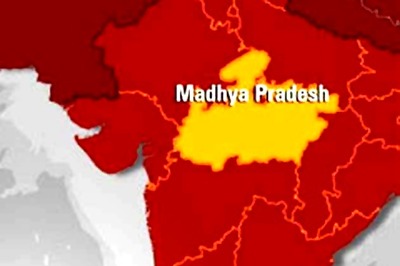
views
In many ways, Samhita Arni eludes the description of a typical writer – and a writer for children, at that. For one thing, she writes scripts for film, television and is an editor for the Out of Print magazine. But best of all, she wrote The Mahabharatha – A Child’s View, when she was 12. “I started writing and illustrating it when I was eight — I had just returned to India after three years in Pakistan, had no friends, and spent a lot of time on my own,” she explains about her forays into writing.Her latest, which happens to be Tara Books’ Sita’s Ramayana, is a graphic novel that retells one of India’s greatest epics, through the eyes of its heroine. A truly unique perspective at what is, mostly, a reverent retelling of Rama’s adventures. “I was very interested in the multiple versions and polymorphic traditions of the Ramayana, and I’d been researching them for a speculative fiction novel I was working on, about Sita’s disappearance,” Samhita explains. “I ran into Gita Wolf, the publisher of Tara, at the Jaipur Literature Festival a couple of years ago, and mentioned about my research. She spoke about a project with the Patua folk of version of the Ramayana and I jumped at the chance to be involved.”Sita’s Ramayana had its beginnings in the hands of Patua artists and story-tellers. This tale, in particular, has been adapted from its scroll-format into book form by Moyna Chitrakaar, the illustrator for the book – and Samhita has written the book to adapt to it. “With a graphic novel there are two modes of storytelling — visual and textual. Here, the visual is primary, and the textual bit, my work, is only to supplement and frame the visuals,” she says.Moyna concurs and adds that painting is in her blood. She elaborates, on the process of Patua art-work, through a translator, as she speaks only Hindi. “Maybe now it is possible to have formal training, but traditionally that was never the case. You learn from your parents, and it is a ritual that you will teach your children how to paint. We don’t marry outside the Chitrakar community, so every child is brought up within this tradition of painting, and has parents who are both painters,” she explains.Moyna, like many of her peers, listened to stories from many regions; “tales from our grandparents, the newspapers and the television,” as she describes it. When she wishes to paint something, she doesn’t create a story. “I hear a story and then the painting follows naturally.” As to how she painted the story of Sita, she reveals, “I grew up listening to the Ramayana, and have heard many versions of it over the years. I have also worked on paintings of the story before. So working on this project was something that I loved to do.”What was it like, working on a book that had Samhita contributing the text according to modern means? “Samhita worked on a computer and I painted, but still the work that we did was for the same purpose. This is my second book, and seeing it in front of me makes me very happy,” she smiles. But why Sita? Samhita explains, “I think it’s important to see Sita not as a just a wife, or queen, but as a woman in her own right and one who, at times in various retellings, displays a great of sensitivity, maturity and insight.” In the pipeline, Samhita Arni is also writing a speculative fiction thriller about Sita for adults. It will be published next year. “What happens after that, well, it’s too early to say!” she adds.
















Comments
0 comment